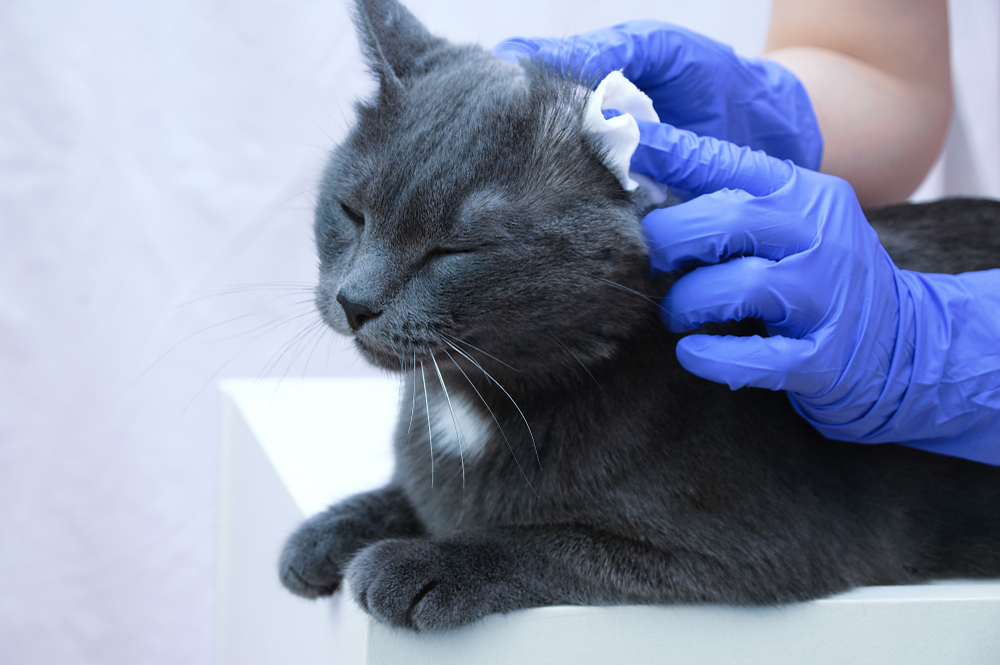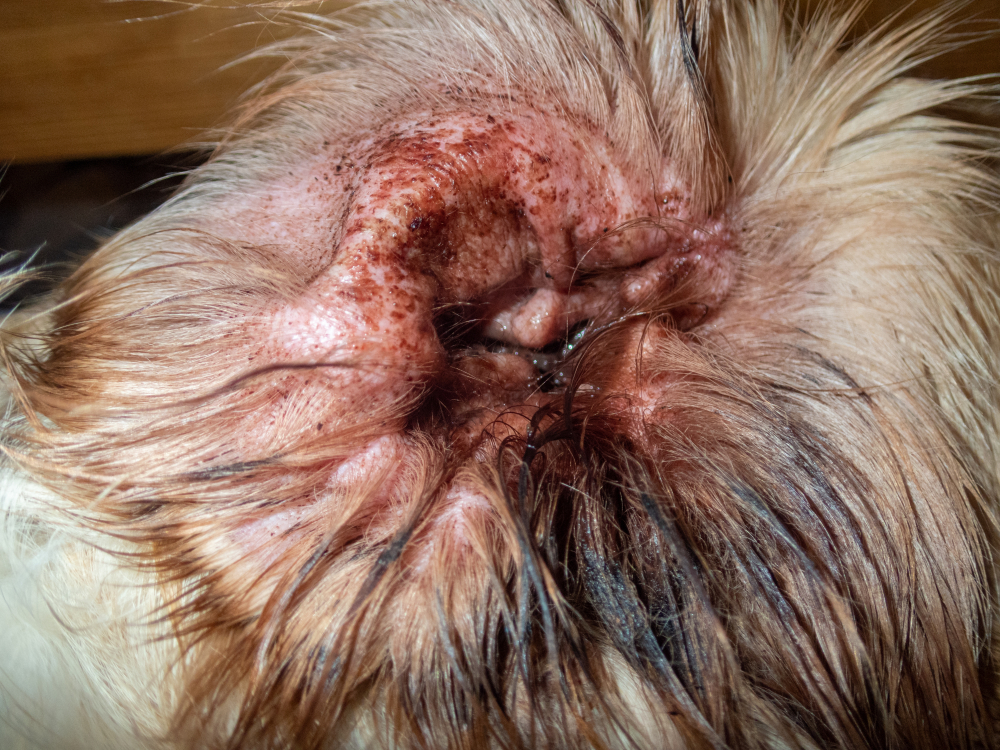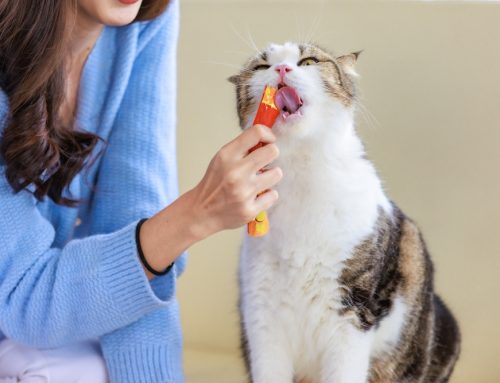You no doubt feel sad and frustrated as you watch your beloved pet suffering—again—from an ear infection. Southeast Texas pet owners commonly seek care at Neighborhood Veterinary Centers of Calder for their pet with a chronic ear infection. Our knowledgeable team takes a comprehensive approach to this issue by addressing not only the signs, but their underlying cause.
“Ears” everything you need to know about chronic ear infections in pets.
Do your ears hang low? At-risk pets
Although any dog or cat can suffer from ear infections, some pets have a naturally higher risk, because of their genetic predisposition, breed conformation, or lifestyle.
At-risk pets include:
- Long-eared or drop-eared pets — This includes retrievers, spaniels, poodles, and any breed whose ear flap (i.e., pinna) blocks the ear canal (e.g., Scottish fold cats).
- Breeds with ear hair — Poodles, shih tzus, poodle mixes, and some terriers have hair inside their ear canal that traps moisture and debris. This hair can be removed only by plucking.
- Frequently bathed pets — Bathing exposes pets to water in their ear canal, which can trigger an infection.
- Dogs who swim — Splashing or submerging in water can trap moisture in the ear canal.
- Allergic pets — Dogs and cats with allergic skin disease (i.e., atopy or allergic dermatitis) may be prone to ear infections.
These pets require more diligent ear care to minimize their infection risk and to ensure prompt recognition and veterinary attention as soon as infection occurs.
Now ’ear this! Chronic ear infection causes in pets
Ear infections (i.e., otitis externa) come with dramatic clinical signs, including a foul odor, unsightly discharge, and incessant scratching. But, these attention-getting signs are only a byproduct of the underlying cause, which must be identified and addressed through targeted treatment.
The most common causes include:
- Environmental or food allergies
- Foreign object (e.g., grass awn, foxtail, seed, polyp, or tick)
- External parasites (e.g., ear mites)
Without proper diagnosis and treatment, pets are affected by a vicious cycle of irritation, inflammation, infection, and chronic ear canal changes, such as thickened and hyperplastic tissue (i.e., cauliflower ear). These structural changes cause stenosis or narrowing of the pet’s ear canal, making the ear more difficult to clean and medicate.
So ear-itating! Chronic ear infection signs
To interrupt their infection cycle, your pet must visit Neighborhood Veterinary Centers of Calder, because early diagnosis and treatment is critical. Signs, in order of severity, include:
- Scratching
- Rubbing or pawing at the face
- Odor
- Redness and inflammation
- Visible brown, black, or yellow discharge
- Thickened or wrinkled ear tissue
Simply cleaning your pet’s infected ears will not treat the underlying cause. Schedule an appointment with your veterinarian to ensure your pet gets fast-acting, effective relief.
’Ear ye, ’ear ye! Veterinary management for chronic ear infections
Chronic ear infections require multiple steps to diagnose and treat. Our veterinarian will perform a complete physical examination to assess your pet’s overall health and look for associated skin issues, such as allergies. Additional workup steps include:
- Otoscopic exam — The otoscope allows the veterinarian to visualize the entire ear canal and ear drum. If your pet is painful, we may perform this exam under sedation.
- Ear cytology — Ear debris or discharge is evaluated under a microscope to look for pathogenic organisms (e.g., bacteria, yeast, mites).
- Treatment — Treatment varies based on your pet’s diagnosis, but generally involves treating secondary infections, reducing pain and inflammation, and eliminating the underlying cause, and may include:
-
- Topical and oral medication
- Allergy testing and treatment
- Procedures under sedation to remove a polyp or foreign object
- Deep ear flush under sedation to clear impacted debris
- Laser therapy to reduce inflammation
- Surgery to remove the ear canal in extreme cases (i.e., total ear canal ablation)
Ear-resistible tips: Preventing ear infections in pets

Ear health begins at home. If possible, introduce ear cleaning and associated care when your pet is healthy.
If your pet has a history of ear infections or associated damage, our veterinarians will provide tailored at-home care advice. Our standard recommendations for healthy ear care include:
- Clean — Clean your pet’s ears weekly with a veterinarian-recommended cleaner.
- Pluck — Ask your groomer to remove any hair blocking the ear canal.
- Dry — After swimming or bathing, gently clean your pet’s ears and use a drying agent to absorb any remaining moisture.
- Feed — If your pet suffers from food allergies, avoid known triggers, and feed only a veterinary-recommended hypoallergenic or limited-ingredient diet.
Chronic ear issues can make life seem like an endless carousel of infection, treatment, and reinfection. So, free your pet from this cycle with a visit to your trusted Southeast Texas veterinary neighbors at Neighborhood Veterinary Centers of Calder. Request an appointment online.






Leave A Comment